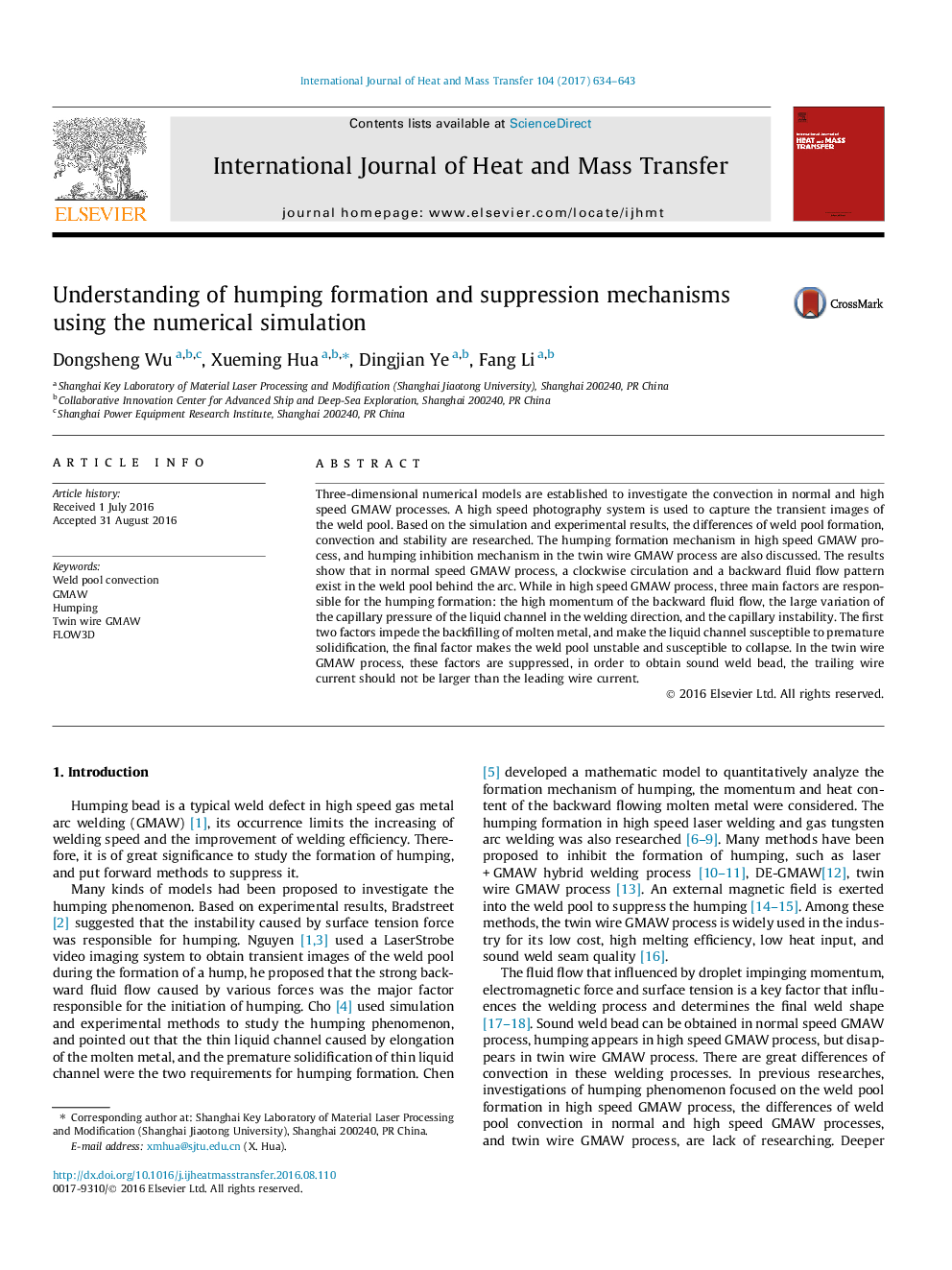| Article ID | Journal | Published Year | Pages | File Type |
|---|---|---|---|---|
| 7054933 | International Journal of Heat and Mass Transfer | 2017 | 10 Pages |
Abstract
Three-dimensional numerical models are established to investigate the convection in normal and high speed GMAW processes. A high speed photography system is used to capture the transient images of the weld pool. Based on the simulation and experimental results, the differences of weld pool formation, convection and stability are researched. The humping formation mechanism in high speed GMAW process, and humping inhibition mechanism in the twin wire GMAW process are also discussed. The results show that in normal speed GMAW process, a clockwise circulation and a backward fluid flow pattern exist in the weld pool behind the arc. While in high speed GMAW process, three main factors are responsible for the humping formation: the high momentum of the backward fluid flow, the large variation of the capillary pressure of the liquid channel in the welding direction, and the capillary instability. The first two factors impede the backfilling of molten metal, and make the liquid channel susceptible to premature solidification, the final factor makes the weld pool unstable and susceptible to collapse. In the twin wire GMAW process, these factors are suppressed, in order to obtain sound weld bead, the trailing wire current should not be larger than the leading wire current.
Related Topics
Physical Sciences and Engineering
Chemical Engineering
Fluid Flow and Transfer Processes
Authors
Dongsheng Wu, Xueming Hua, Dingjian Ye, Fang Li,
